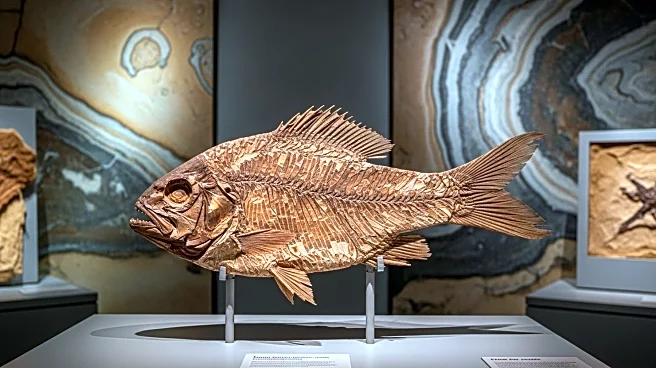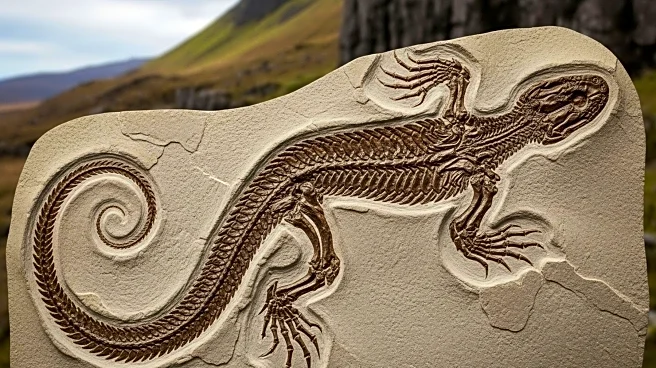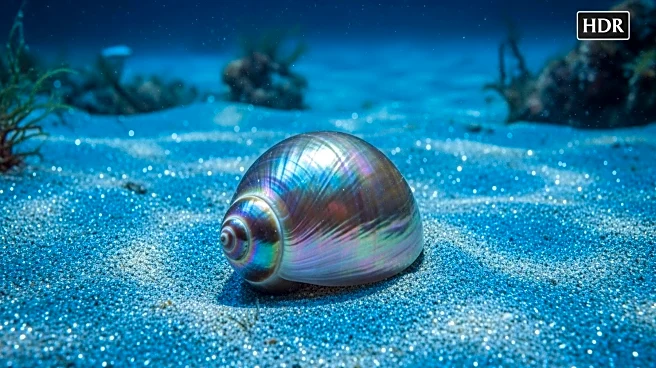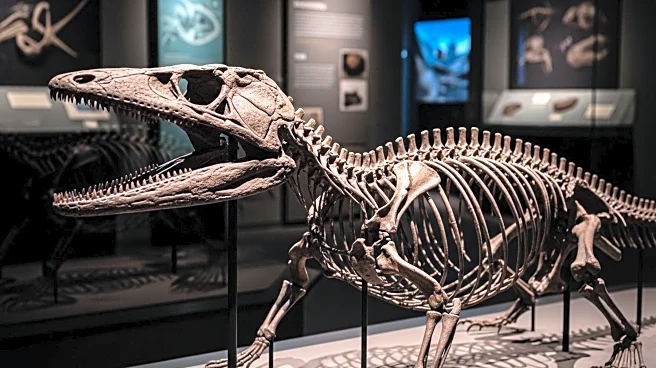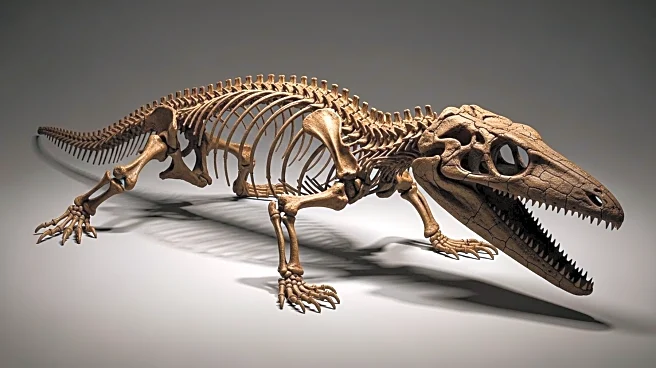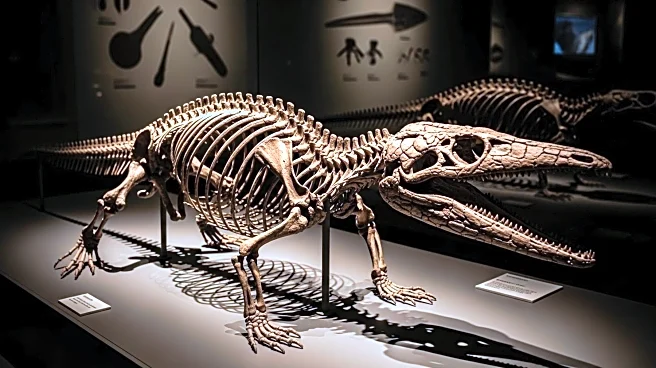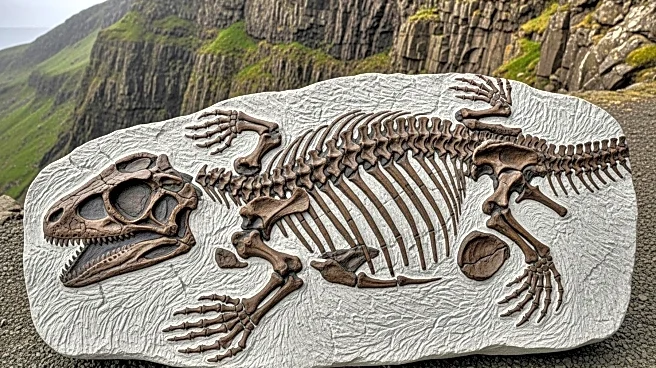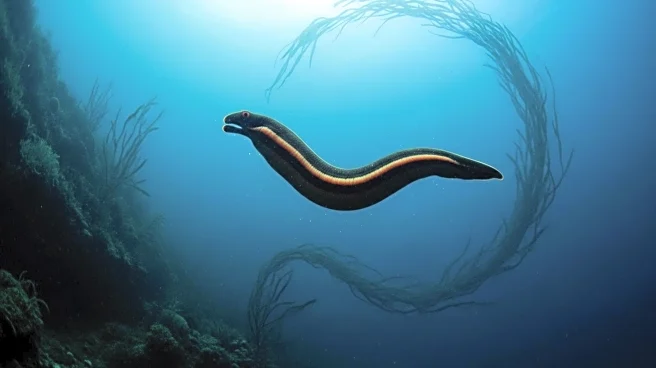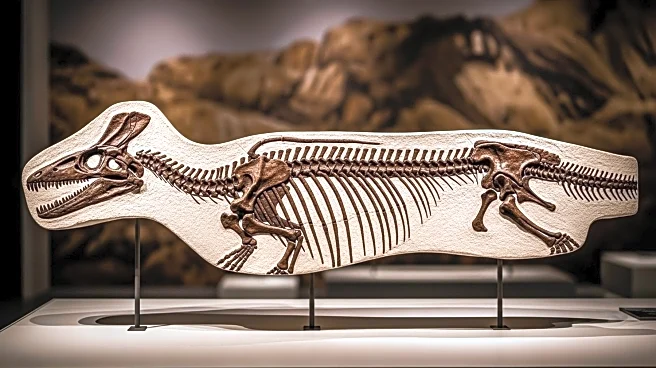What is the story about?
What's Happening?
Researchers at the University of Western Ontario, in collaboration with the Royal Tyrrell Museum of Palaeontology and international partners, have discovered a fossil of a tiny fish in southwestern Alberta. This specimen, named Acronichthys maccognoi, dates back to the Late Cretaceous period, approximately 100.5 to 66 million years ago. The discovery provides new insights into the origin and evolution of otophysans, a supergroup of fish that includes catfish, carp, and tetras, which today account for two-thirds of all freshwater species. The study, published in the journal Science, highlights the significance of Acronichthys as the oldest North American member of the otophysans supergroup, offering valuable data to document the early evolution of many freshwater fish species.
Why It's Important?
The discovery of Acronichthys maccognoi is crucial for understanding the evolutionary history of otophysans, which are a dominant group in freshwater ecosystems worldwide. This fossil provides evidence of the transition from marine to freshwater species, suggesting that this shift occurred at least twice during the evolution of otophysans. The research offers a new divergence timeline for these species, estimated at around 154 million years ago, during the Late Jurassic period. This finding is significant for paleontologists and evolutionary biologists as it helps trace the origins of freshwater fish that now inhabit rivers and lakes globally, enhancing our understanding of biodiversity and ecosystem development.
What's Next?
The research team aims to further investigate how Acronichthys and its ancestors transitioned from marine to freshwater environments, especially considering their current distribution across continents. This involves exploring the mechanisms that allowed these species to adapt and thrive in freshwater habitats. Future studies may focus on uncovering more fossil evidence to fill gaps in the evolutionary record and provide a clearer picture of the historical biogeography of otophysans. Additionally, the use of advanced imaging techniques like micro-CT scans will continue to play a vital role in examining fragile fossil specimens without damaging them.
Beyond the Headlines
The discovery of Acronichthys maccognoi not only enriches the paleontological record but also raises questions about the adaptability and resilience of species in changing environments. Understanding the evolutionary pathways of otophysans can offer insights into how current freshwater species might respond to environmental changes, such as climate change and habitat loss. This research underscores the importance of preserving fossil sites and utilizing non-destructive imaging technologies to safeguard valuable paleontological data for future generations.
AI Generated Content
Do you find this article useful?
